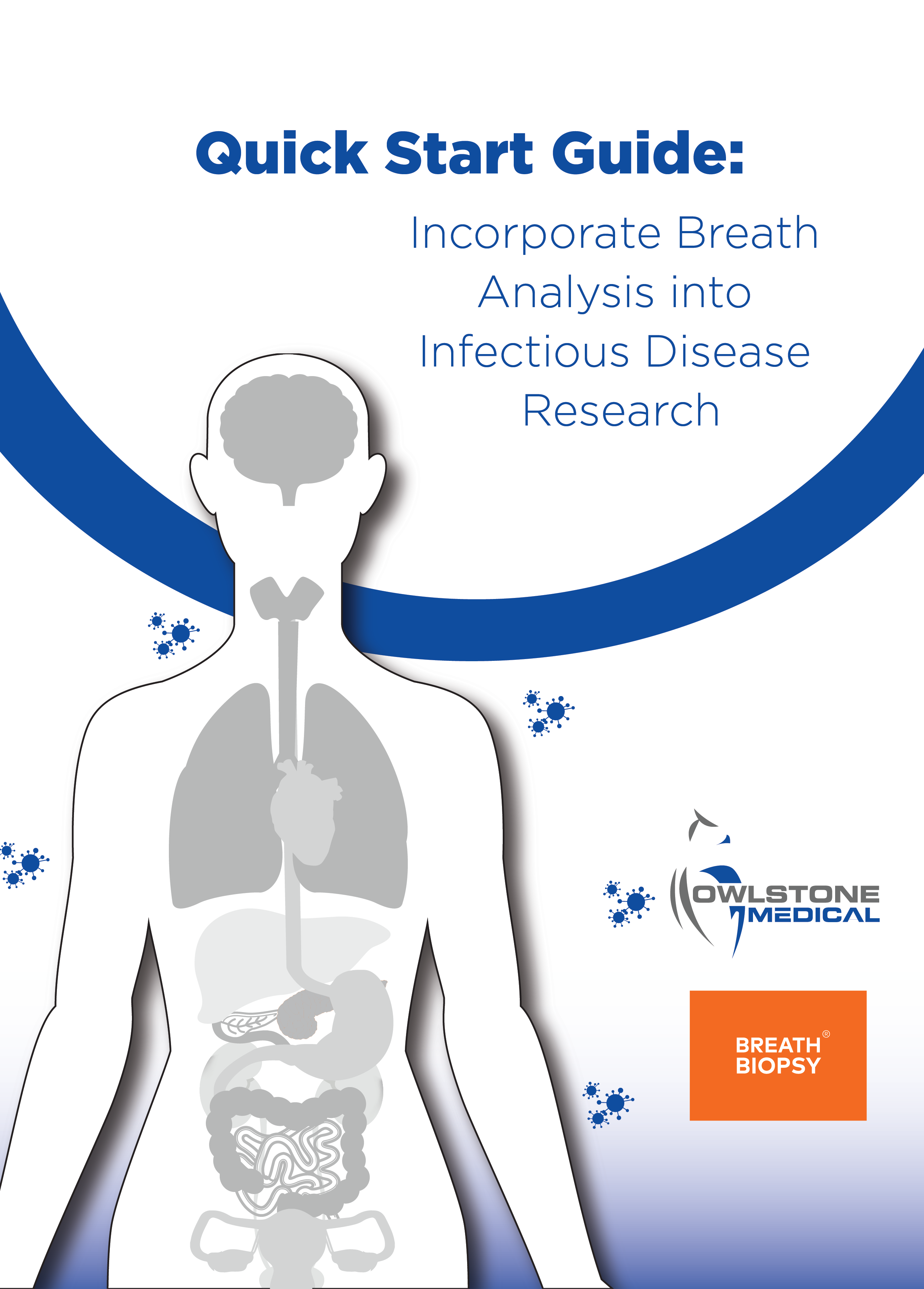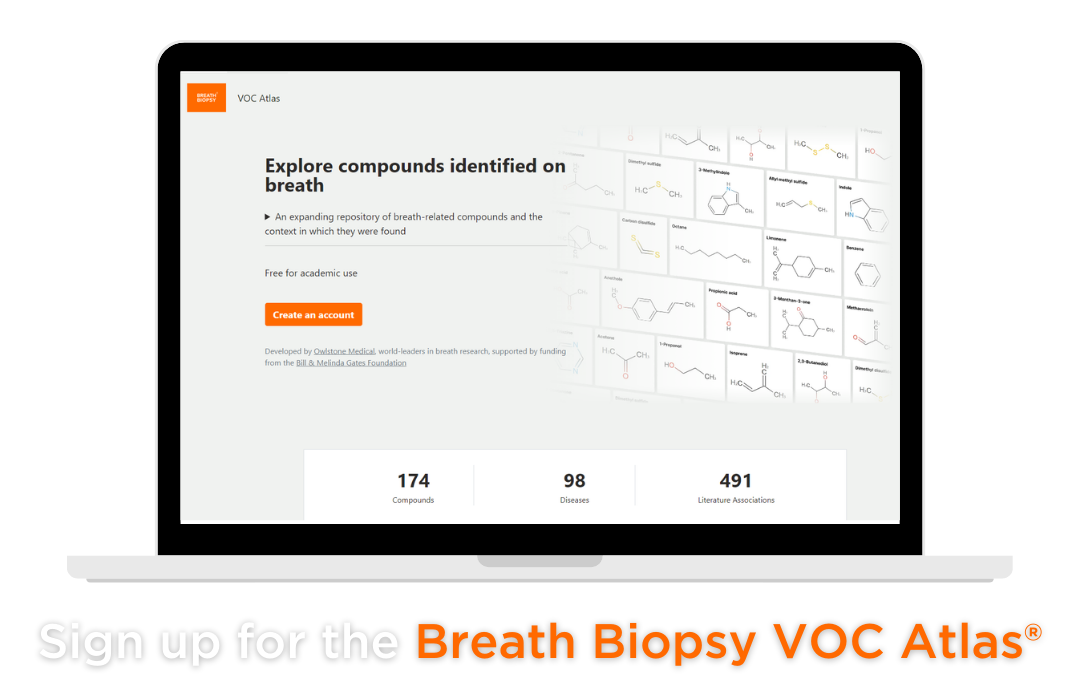Quick Start Guide: Incorporate Breath Analysis into Infectious Disease Research
Read our short document summarizing the potential of breath analysis in infectious disease research, what data we have, and how Owlstone Medical can help.
Breath analysis is emerging as a revolutionary tool in infectious disease research, offering a non-invasive, rapid, and cost-effective approach to diagnosing and monitoring diseases. Advances in technology and analytical techniques mean we can detect volatile organic compounds (VOCs) in exhaled breath that are associated with various infectious diseases, including malaria, tuberculosis, COVID-19, and aspergillosis. Our Quick Start Guide: Incorporate Breath Analysis into Infectious Disease Research provides details on how to implement breath analysis into research pipelines for these diseases.
Our Quick Start Guide is a free short document packed with insights into the expanding applications of breath analysis in infectious disease research, including our Breath Biopsy® technology. This guide is perfect for researchers looking to begin using breath analysis in their studies, as well as researchers who are already using breath analysis and are interested in incorporating this method into infectious disease research. Download your free copy now by completing the form below.
What can you expect to find in our Quick Start Guide: Incorporate Breath Analysis into Infectious Disease Research?
The key features of our guide include:
- Details on why breath is a powerful sampling matrix for infectious diseases.
- Data that is currently available in the literature and our internal work illustrating biomarker detection through breath analysis for infectious diseases.
- How our Breath Biopsy products and services can be used to identify and quantify VOC biomarkers in exhaled breath as well as headspace analysis in vitro.

Our guide discusses many different infectious diseases, including tuberculosis. Tuberculosis is a bacterial infection that affects the lungs, and early tuberculosis diagnosis is critical for controlling its spread. Tuberculosis symptoms include a cough that lasts three weeks or longer, chest pain, and coughing up blood. Tuberculosis can alter the VOCs found in breath due to the bacteria that causes the infection, as well as oxidative stress in the body. Breath analysis offers a quick and non-invasive alternative to current diagnostic methods such as blood tests and chest x-rays. Breath tests could streamline tuberculosis screening, particularly in resource-limited settings, improving early detection rates.
The COVID-19 pandemic has highlighted the need for rapid and accessible testing for infectious diseases. While PCR tests remain the gold standard for covid diagnosis, breath analysis can be explored as a potential tool for mass screening and diagnosis of the condition. The virus that causes COVID-19 produces VOCs in the body that can be detected in exhaled breath. Breath analysis could be used to develop a covid test that is fast and non-invasive, able to screen large populations especially during outbreaks.
We have recently entered a partnership with the Bill & Melinda Gates Foundation to advance our Breath Biopsy platform to develop breath-based diagnostics and identify breath biomarkers for tuberculosis and human immunodeficiency viruses (HIV). The partnership will also support the expansion of the Breath Biopsy VOC Atlas®, a comprehensive database of the clinically validated compounds that are found in exhaled breath.
If you have any questions or would like to use Breath Biopsy in your infectious disease research, please get in touch with our expert team.
